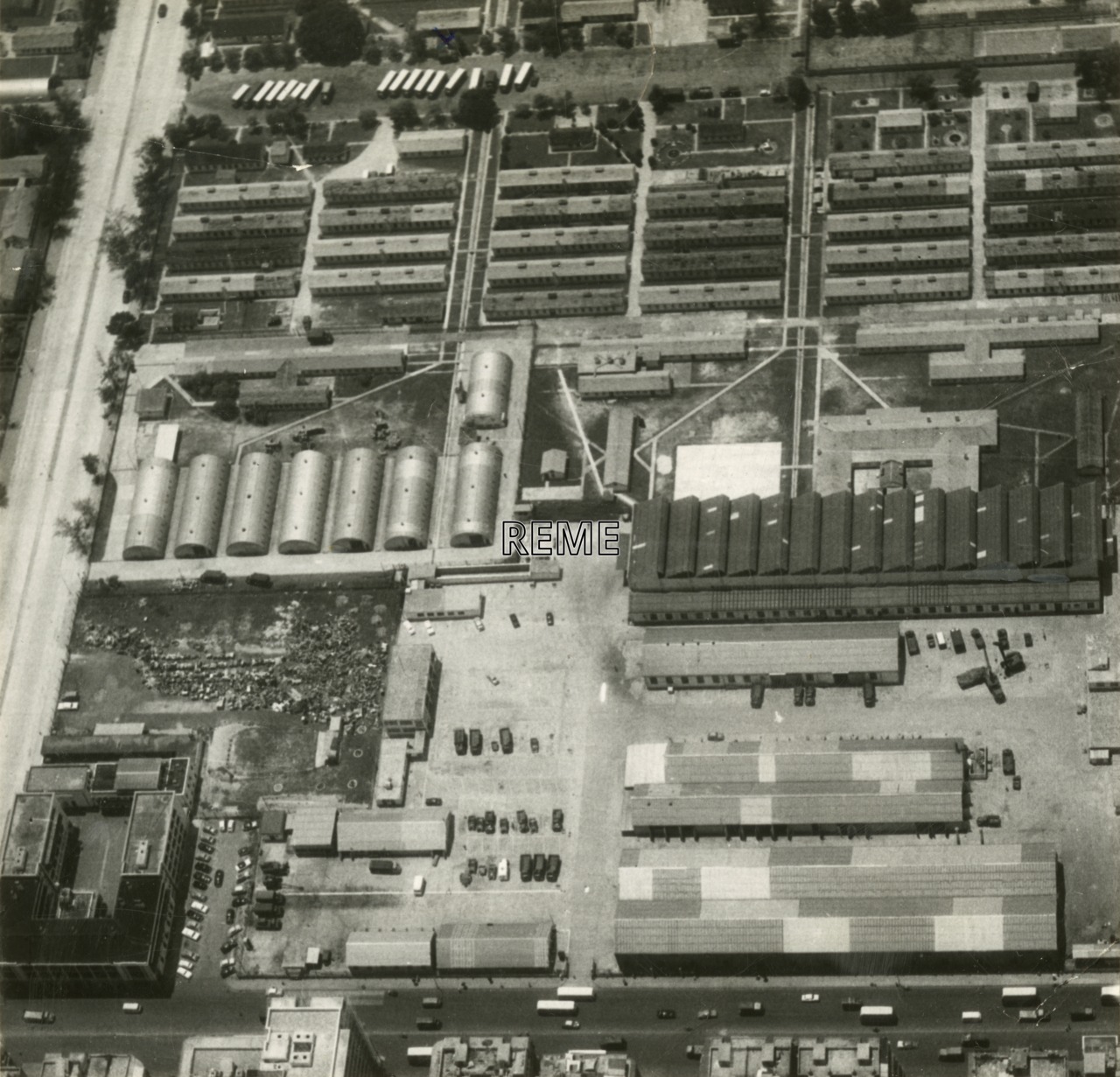
Sham Shui Po Camp, Hong Kong, 50 Command Workshop REME
Aerial photograph of Sham Shui Po Camp, Hong Kong, showing 50 Command Workshop REME.
From the album ‘REME in the Far East’
c 1960s
Other Photos Nearby
Buy This Print
| Size | Price (inc VAT) | Shipping UK (6"x4" & 10"x8" £2.50) (Other £3.99) |
Worldwide (£5.99) |
| 6"x4" | £8.75 | ||
| 10"x8" | £15.50 | ||
| 16"x12" | £25.00 | ||
| 20"x16" | £31.25 |

I reconise the smallest of the 3 buildings in middle of this photo as the training centre as I was a REME national serviceman there for 5 months in 1957 (have photo sitting on armoured car) also the open gate in bottom of photo where we would gather to watch the passing by of many Chinese funerals. I was later posted to REME L.A.D. to B squadron 1st. Royal Tank Reg. in Sek Kong as Driver / wireless operator in a Churchill ARV. – 50 ZR 30. —Memories, Memories – Thanks for the chance to view this area again.
I served in 50 Command from 1968-70. I was on vehicle inspections in the bottom left, the team at the time was WO2 (AQMS) Mick Pritchard , Sgt John (Geordie) Clarke, Sgt Les Clucas and myself as a lowly Cpl, our chinese clerk was Mr Pun King Kong Next to our ofice was the char wallahs cafe.
I was the last Office Commanding 50 Command (later 50 Hong Kong) Workshop before the workshop moved from this location at Sham Shui Po in Kowloon to Borneo Lines, Sek Kong in the New Territories in 1984. In my time, all the huts at the back of the workshop were replaced by civilian apartment blocks but the main HQ, Armourers shop, MT, Optronic, A & G and B Vehicle repair buildings were still in use, as was the “Carver Club” recreational building. The move was marked by a unit relay run, carrying the Wilkinson Sword of Peace, from Sham Shui Po to Sek Kong.
I was stationed at 50 Command Workshops REME at Sham Shui Po in Kowloon from 1977 to 1979 as corporal and then sergeant Recovery Mechanic. The section was made up of Hong Kong Chinese soldiers, the two I recall being Corporals Ma Kin Ping and Chan Fat. Our duties were focused primarily on major civilian tasks and typhoon rescue other than routine military work. The area surrounding the camp, including all the huts towards the rear of the camp in the photo, had become high rise apartment buildings and very busy small industry taking up ground floor shopfront space and out onto the pavement. It was considered ‘officially’ to be an area with high criminality but in two years I never had anything but good relations with the surrounding community.